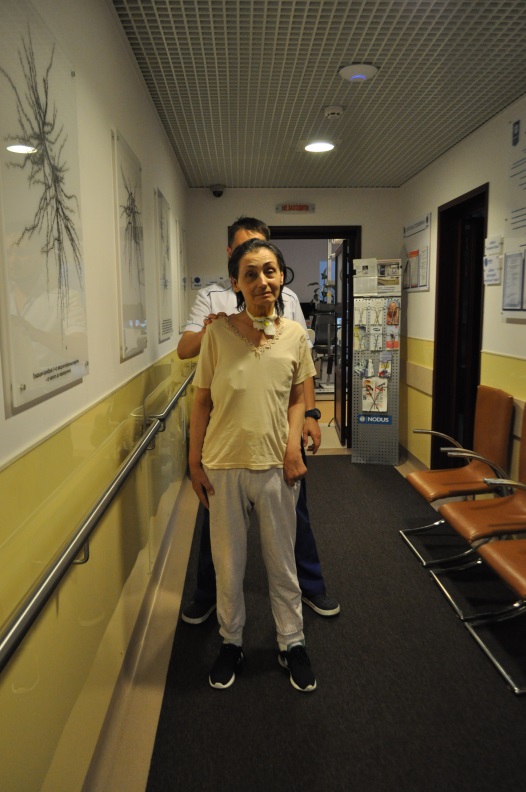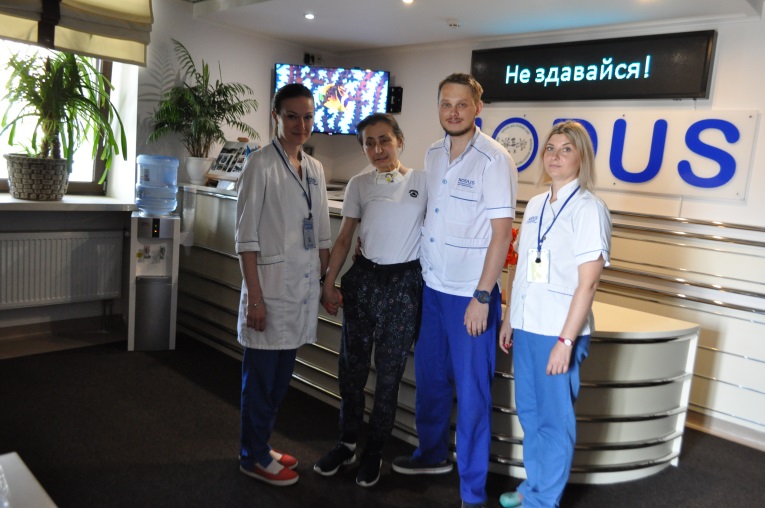Achievements of our patients
(*All information, photos and videos about patients are posted only with their consent)

In October 2018 the patient Tetyana Sh., born in 1960, was admitted for further assessment and specialized restorative treatment & neurorehabilitation at NODUS. She was in a grave condition due to multiple cerebral circulation disorders as a result of severe cardiovascular pathology and repetitive inflammation in lungs. Her consciousness was depressed – stunning, expressive bulbar syndrome manifested in her inability to swallow, talk, sit down, stand and walk. She had extreme weakness in the limbs (tetraparesis with the left side lateralization), purulent -infected wounds – bed sores.
The patient underwent specialized neurorehabilitation according to the created individual rehabilitation program (IRP), that included the following methods applied and set goals to achieve:
Secondary surgical treatment of a trophic wound of the 3rd degree was carried out, necrectomy. The patient was under constant outpatient monitoring by cardiologists of the National Institute of Cardiovascular surgery named after N.N.Amosov under the Academy of Medical Sciences of Ukraine, where she undergone numerous examinations and consultations during rehabilitation at Nodus.
The patient successfully completed the individual in-patient rehabilitation course with the following positive dynamics:

